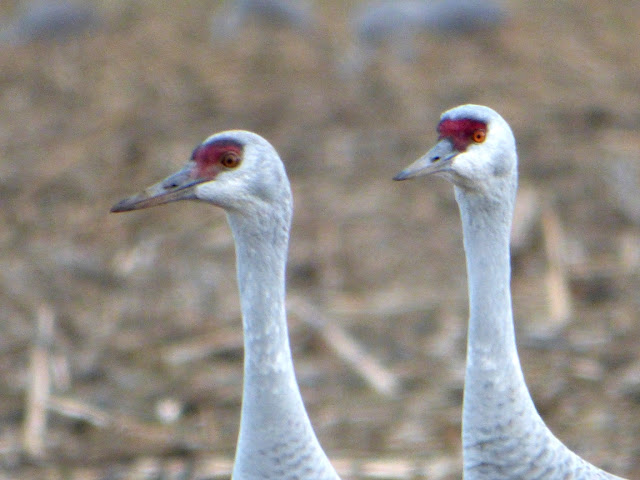It's been a rich week for birdwatching. I made it back to the Tuolumne River after a month long absence, I got out to the Beckwith Road viewing platform at the San Joaquin National Wildlife Refuge, and then yesterday, Mrs. Geotripper and I headed out to the California prairie and vernal pool habitat, a unique landscape in the Sierra Nevada foothills. I've ended up with week's worth of posts, including some new birds. But this moment on Warnerville Road was pretty special.
There's a spot where an intermittent creek crosses road, and there is a high terrace of volcanic tuff (the Valley Springs formation) which many animals call home. Last March
I got a picture of a raccoon in one of the holes dug out the cliff, and there are usually lots of swallows and finches near by. I always watch for Burrowing Owls, but I haven't been too lucky with them yet.
It looked like someone had put a log or something in the top hole along the cliff, but I was immediately sure it was something else. When I zoomed in with the camera, I saw this extraordinary sight...
There were two Great Horned Owls (
Bubo virginianus) in there! I seen Great Horned Owls on any number of occasions, but I've never had them completely disregard my presence. I didn't even have to get out of the car to get a series of nice shots.
Great Horned Owls have one of the widest ranges of any bird in the Americas, being found as far south as Argentina and Urugway and as far north as Canada and Alaska.
I've featured them twice on this blog, but not with pictures as nice as these.
I'm assuming this is a mated pair, maybe even with their chosen nest site.
I know we aren't supposed to anthropomorphize birds, but owl expressions sure seem to cover the gamut of emotions, even if they don't. I see perturbed, surprised, bored, curious, and unconcerned in these pictures.
It was a privilege to spend a few moments with them, even if at a distance.
By the way, which photograph do you prefer? I couldn't choose my favorite.














































